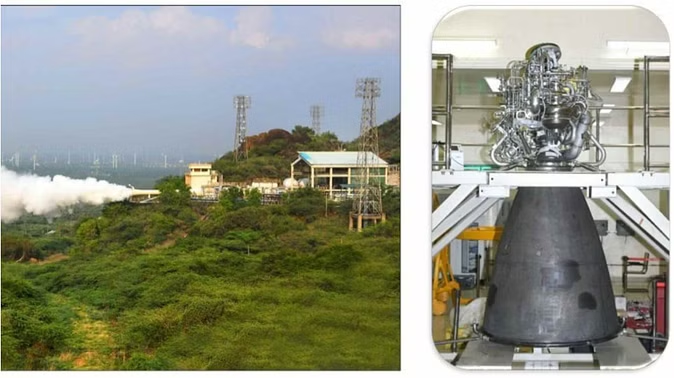Another milestone for Gaganyaan Mission: ISRO successfully tests engine that will take Indians to space
The Gaganyaan mission aims to launch a crew of three humans into an orbit of 400 km for a three-day mission and bring them back safely to earth. In a significant boost to India"s bid to launch humans into space under the Gaganyaan mission, Indian Space Research Organisation (ISRO) has successfully completed the human rating of its CE20 cryogenic engine, an official said on Wednesday.
Total Views |
In a big move towards the development of the Gaganyaan mission, the Indian Space Research Organisation (Isro) successfully tested the cryogenic engine that will power Indian astronauts to space.

The Indian space agency completed the human rating of its CE20 cryogenic engine that will power the cryogenic stage of the Launch Vehicle Mark II (LVM3) to space. The heavy-lift vehicle has been chosen to launch Indian astronauts on the maiden flight of the Gaganyaan mission.
The test, the seventh of a series of vacuum ignition tests, was conducted at the High Altitude Test Facility at ISRO Propulsion Complex, Mahendragiri, where engineers simulated the flight conditions.
"The ground qualification tests for the human rating of the CE20 engine involved life demonstration tests, endurance tests, and performance assessment under nominal operating conditionsas well as off-nominal conditions w.r.t thrust, mixture ratio, and propellant tank pressure," Isro said in an update.
Huge development for Gaganyaan mission.
— Sachin Chaudhary (@Tweets_Sachin1) February 21, 2024
ISRO's CE20 cryogenic engine is now human-rated for Gaganyaan missions after rigorous testing. pic.twitter.com/KA16uQXafU
With the latest test, the ground qualification tests of the CE20 engine for the Gaganyaan program have been completed.
"To qualify the CE20 engine for human rating standards, four engines have undergone 39 hot firing tests under different operating conditions for a cumulative duration of 8810 seconds against the minimum human rating qualification standard requirement of 6350 seconds," Isro said.
The TV-D1 test flight was a crucial part of the Gaganyaan mission, which aimed to demonstrate India's capability for human spaceflight by sending a crew of three individuals into a 400-kilometer orbit for a three-day mission and ensuring their safe return by landing in the waters of the Indian Ocean.
The test flight was to assess the mid-flight crew escape system of an early version of the Gaganyaan crew module.
The TV-D1 vehicle used a modified VIKAS engine with a Crew Module and Crew Escape System mounted at its front. It stood at 34.9 meters tall and had a lift-off weight of 44 tonnes. Its structure was a single-walled unpressurized aluminum structure with a simulated thermal protection system.

